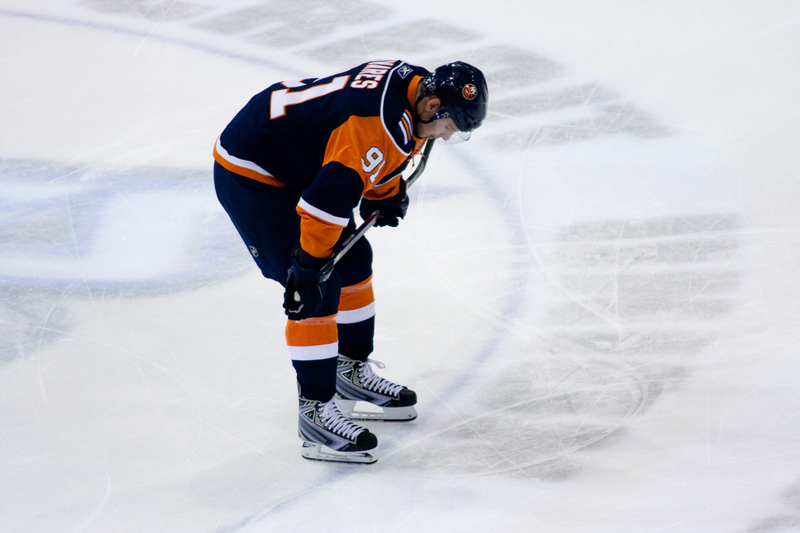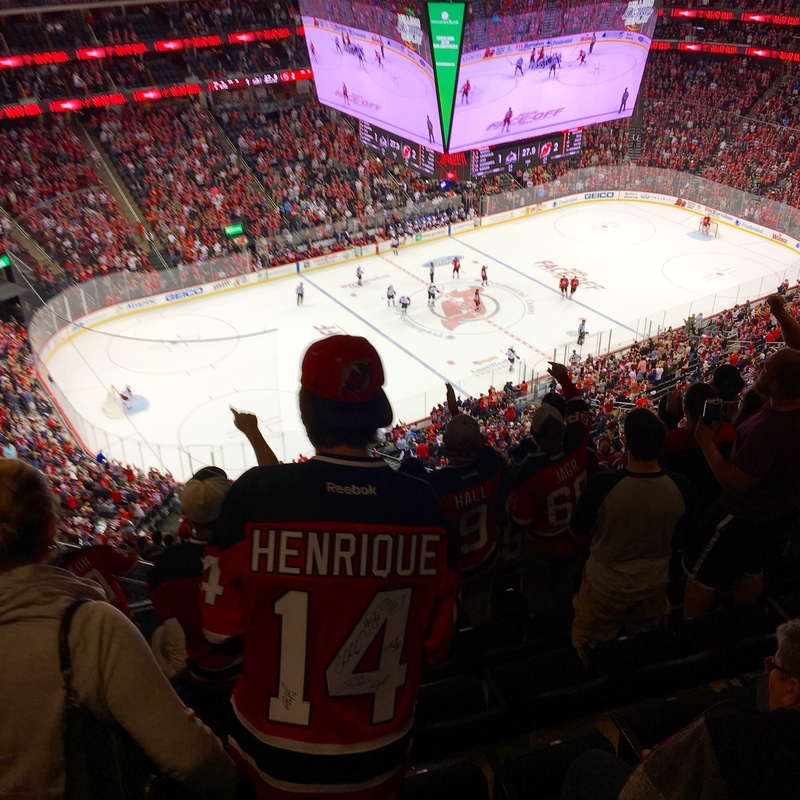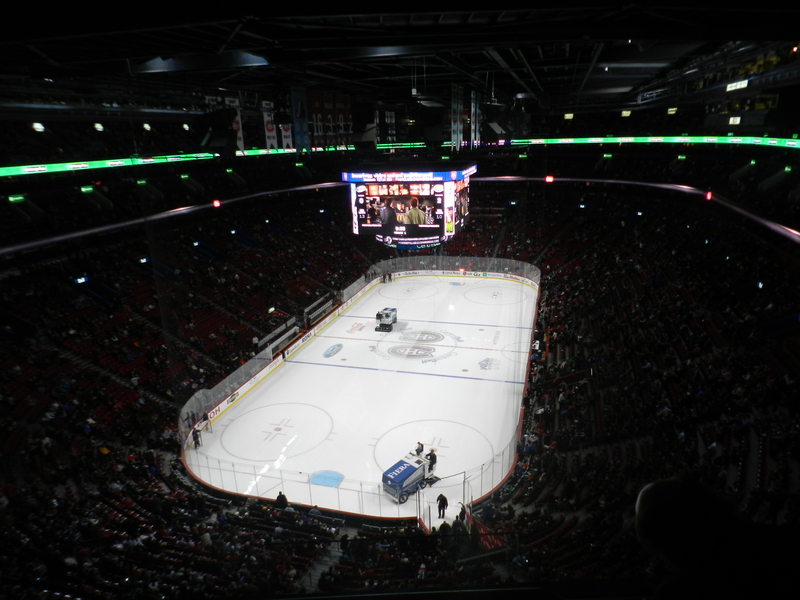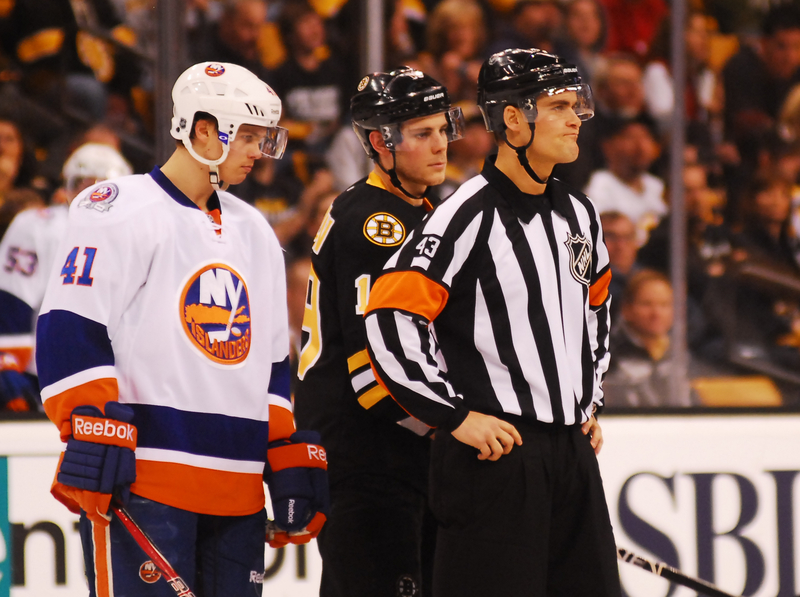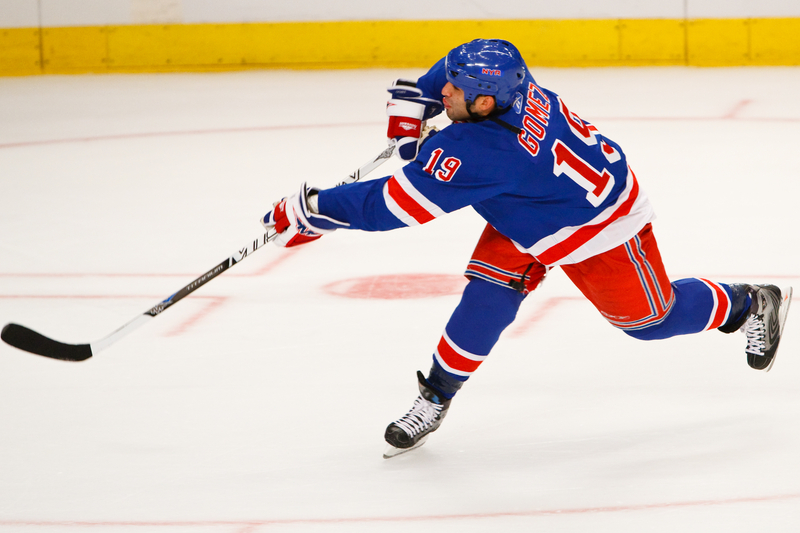Last updated on October 7th, 2022 at 02:30 pm
In hockey, offsides occur when an offensive player crosses their team’s offensive zone before the puck enters that area. When a team has possession of the puck, all skaters must remain behind the blue line in the neutral zone until the puck crosses the blue line into the offensive zone. Ice hockey has three distinct zones: the offensive zone, the defensive zone, and the neutral zone. Essentially, the offsides rule prevents players from camping near an opponent’s goal and waiting to take shots throughout a game.
So, what is the difference between offsides and icing during a hockey game? Is getting an offsides call a penalty for a player? When and where does the action resume after the delay in game call occurs? What do the color lines represent on a hockey rink, and how does clearing the puck work?
Here is the complete breakdown of what offsides are in a hockey game.
Where on the Rink Does Offsides Occur / What Do the Lines Represent?
Hockey offsides always occur at the blue lines on the rink. A player can never be offsides on the red or the goal line.
There are five distinct lines (Blue, red, and goal line) on every National Hockey League (NHL) and Olympic regulation rink. The blue lines show the start of each team’s offensive zone, while the red line at the center of the ice separates the offensive zone. Meanwhile, the two red lines at each goal net represent icing.
What is the Difference Between Offsides and Icing?
Icing occurs in ice hockey when a player shoots the puck from one half of the rink, over the red line, into their offensive zone, and over the goal line. If a player puts that puck in the net, it is a goal. However, icing occurs if the puck does not go in the net, and no defending player can reasonably catch it before it slides over the goal line. The ref signals icing by putting their arms up and whistling, and play resumes in the offending team’s defensive zone.
Meanwhile, offsides occur when an offensive skater enters the zone before the puck enters the zone. There are nine faceoff dots on a hockey rink, and play will resume at the nearest faceoff dot to where the offsides took place. Faceoffs can occur in all three zones: the defensive zone, the offensive zone, and the neutral zone.
Is Getting Offsides a Penalty in Hockey?
When a player is offsides, there is an immediate stoppage of play, but no penalty happens against that player. Instead, the next faceoff occurs in the closest spot where the player went offsides to resume action.
Regardless, while it is not a penalty, getting offsides can be a gigantic momentum shifter during a match. With instant replay being part of games, refs and officials can tell with pin-point accuracy if a player was crossing the blue line before the puck got there. That means a breakaway from the offensive team that could have been a goal would be labeled as offsides instead. When that happens, it can take away the momentum of the team trying to score.
Is there a Ref on the Rink to Watch for Offsides?
In ice hockey, there are two referees and two linesmen. The linesman’s sole purpose is to monitor the lines in hockey. They are the ones concerned with whether a player was offsides or onside.
What is the Offensive Zone in Hockey?
The offensive zone is where you are shooting at the opponent’s goaltender, while the defensive zone is where you are defending your goal against opposing players. The neutral zone is the zone between both offensive zones. The neutral zone is in the rink’s center between both blue lines.
What Does a Puck Clearance Mean?
During a hockey game, there are times to clear the puck for strategy. One reason is a team playing with fewer players on the rink due to a penalty. The second reason is for a team to make a line change. Here is a breakdown of each.
Puck Clearance to Waste Time on a Penalty
When a team has one or two fewer players on the rink than their opponent due to a penalty, they can clear the puck without any icing penalty. A team can pass, shoot, or lob the puck down the rink when they have one or fewer people on the rink without any icing penalty. The goal of doing this is to take time off a penalty and hold off the offense until their teammates can come back from their penalty.
Line Change Strategy
If a player is in the offensive zone and the puck enters there, there will be no offsides if the player does not touch the puck. This non-touch is a puck clearance or delayed offsides. This delayed offsides typically occurs when a player dumps the puck for a line change.
When this occurs, the linesman will signal the delayed offsides by raising their arm. By raising the arm, the linesman ref signals that any offensive player in that zone who touches the puck will result in offsides. A delayed offsides call usually does not result in an offsides penalty because the offensive team does not touch the puck.
What Does Straddling the Blue Line Mean?
In ice hockey, players do something called “straddling” the blue line. Straddling the line occurs when a player keeps one skate in the neutral zone and one skate in the offensive zone. Players do this so that they can stay onside and wait up for the player with the puck that is behind them.
Conclusion: What is Offsides in Hockey?
In summary, hockey, like soccer, has an offsides rule to prevent players from getting an offensive placement advantage against the defense by hanging out near the net. Hockey puts the offsides line at the blue line for the offensive zone for the offense for everyone to see. The offensive team can’t pass the puck to a player past this line. However, teams will straddle that blue line and immediately skate by it as the player with the puck enters the offensive zone to help score a goal.
Similar Posts:
How Many Periods in a Hockey Game?
How Long is a Hockey Intermission?
What is a Power Play in Hockey?
What is a Penalty Shot in Hockey?
Greg Kristan, owner of The Stadium Reviews, LLC and TM Blast, LLC, brings his extensive experience visiting over half of the MLB ballparks, along with numerous MLS, NHL, NBA, and NFL venues, to provide in-depth coverage on the bag policy, food options, and parking. He has also been interviewed about his experiences on several sports podcasts.

